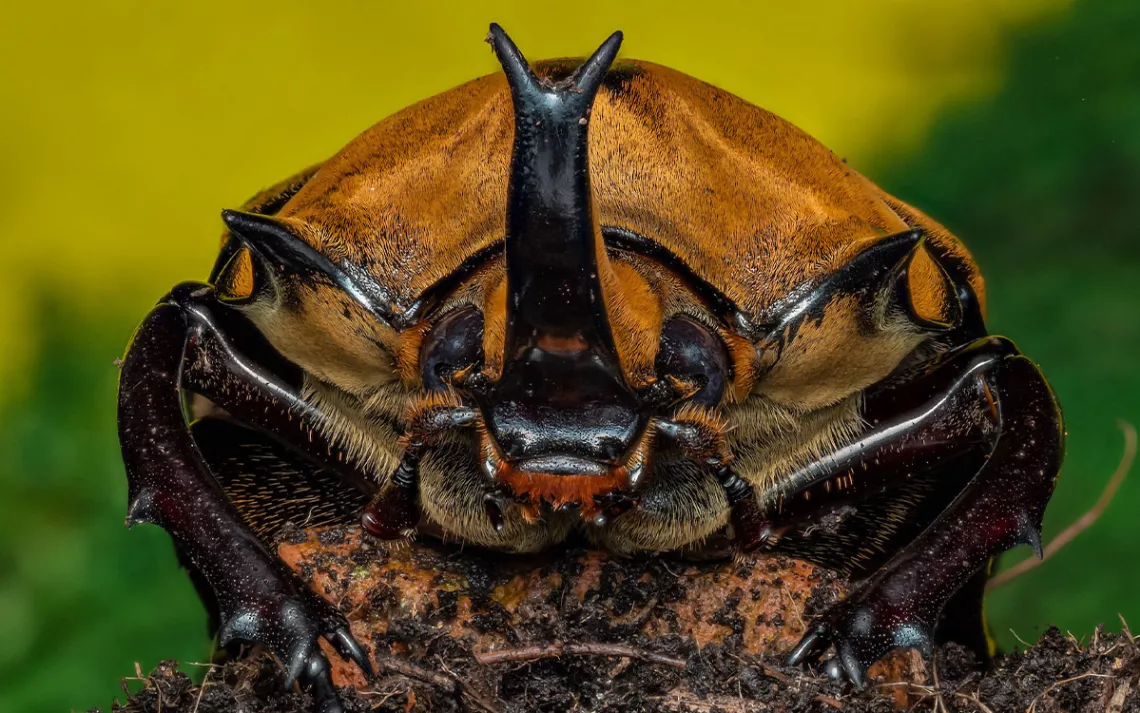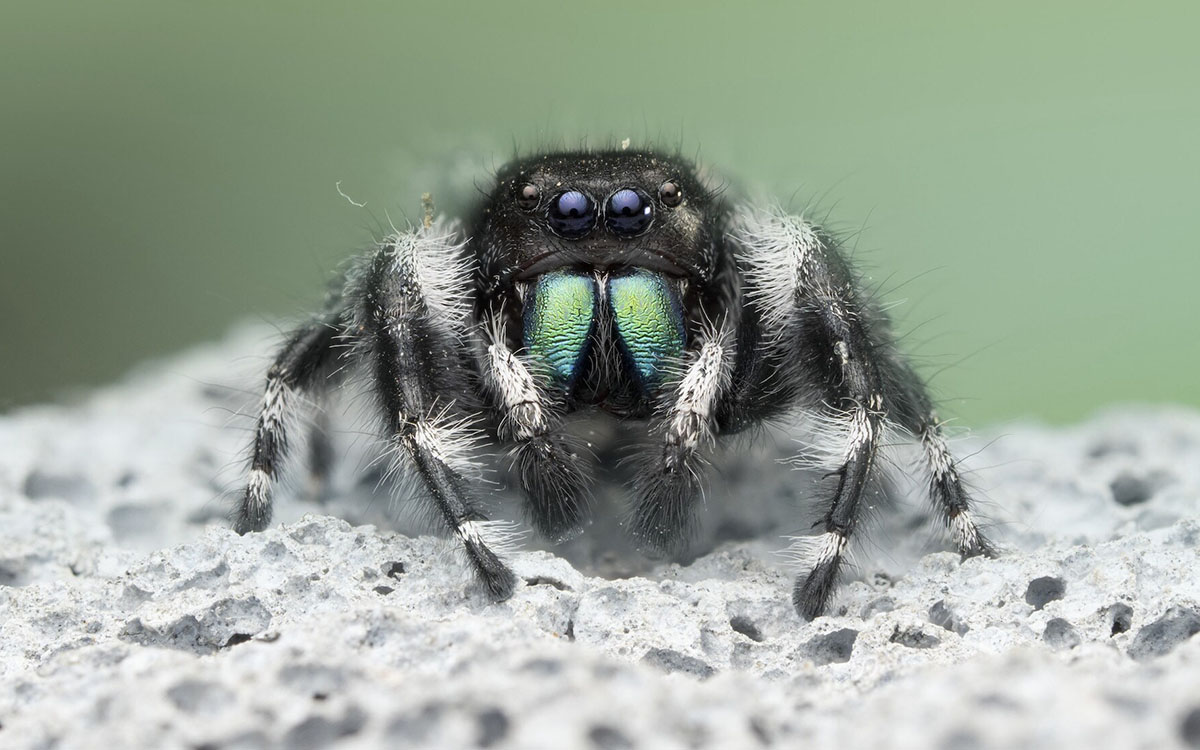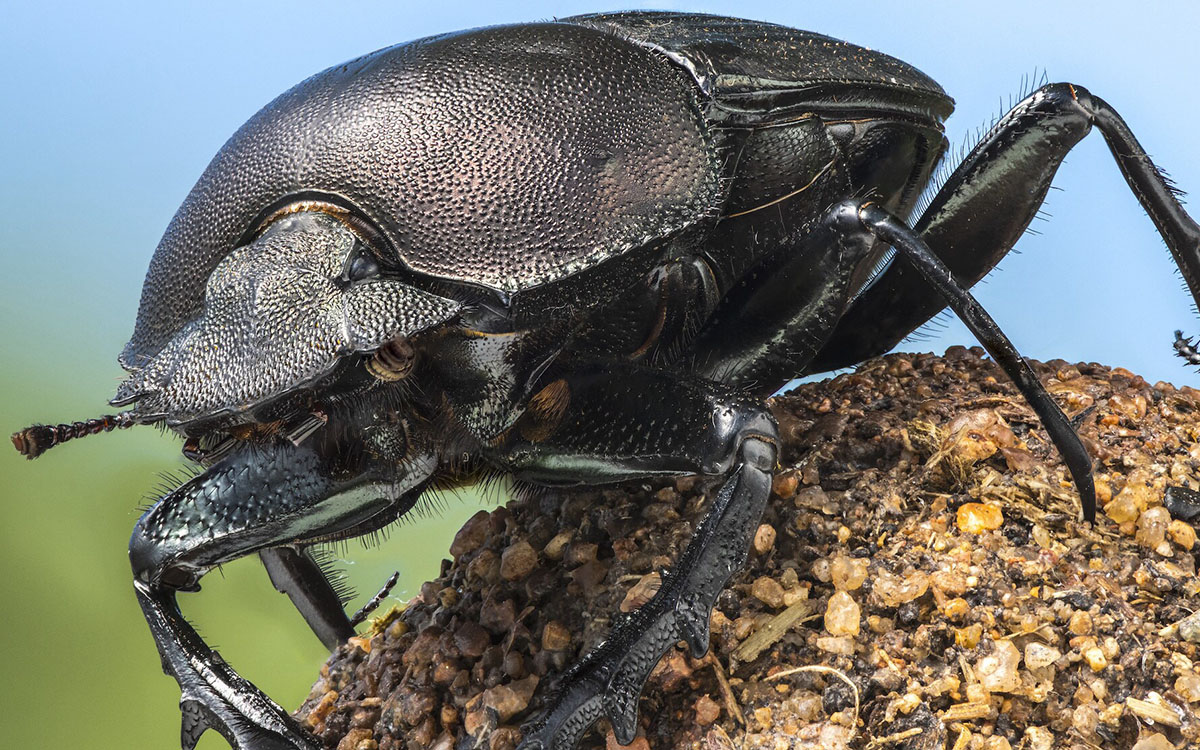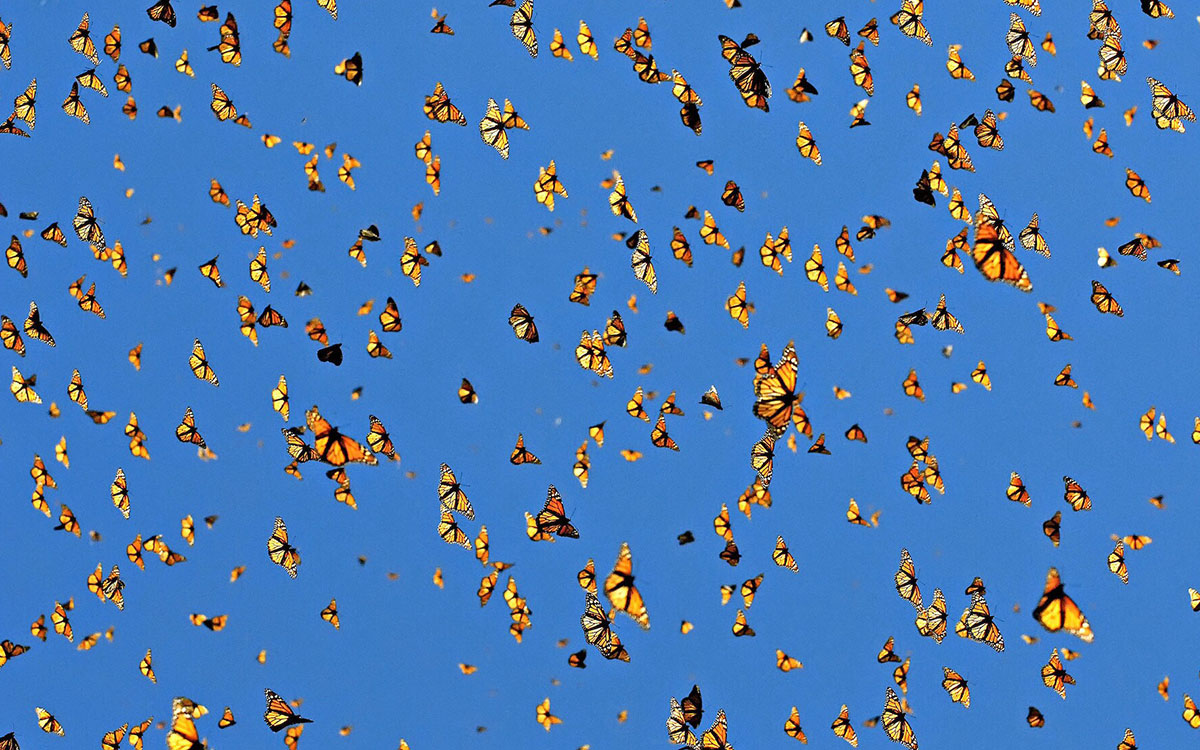“A Real Bug’s Life” Magnifies Little Lives—and Underscores the Importance of Biodiversity
The new National Geographic docuseries explores the itsy-bitsy wonder, and grand importance, of insects

An elephant beetle, one of the insect world’s heaviest creatures. | Photo by David Hamilton/National Geographic
Look deep into a jumping spider’s eight midnight eyes and you might see your own reflection; push poop for a mile in a dung beetle’s (hypothetical) shoes and you might gain a lesson in resilience.
A Real Bug’s Life—the new docuseries from National Geographic released on Disney+ this week—conveys fast facts and vivid imagery with empathy and awe for the sprawling insect world. Across five 30-minute episodes, narrator Awkwafina personifies the lives of more than 20 tiny species, showcasing more than 130 individual bugs’ abilities and behaviors.
Never deviating from its quippy and bright tone, the series does subtly offer, for those who prefer to think deeper, a suggestion of serious contemplation. It opens in bustling New York City; smart camerawork juxtaposes the similar lives of humans and bugs, with both following strict routes and routines, dividing labor among themselves and seeking food and mates with haste. One particularly stomach-churning moment reminds us that puppy poop is only a single fly away from becoming hamburger seasoning—a scene that sticks in the mind of both the viewers, and those who brought it to life.
“We had to film these two Pomeranians taking a poop on the sidewalk in New York, and then a fly landing on the poop and flying around a diner,” says Nathan Small, the docuseries’ director of photography. “It sounds simple enough, but it was a nightmare. We had a box of flies and released them one by one in the hopes that they’d smell the poop and come and land on it. It was burning hot and super humid. My job was to pipette water onto the poop to keep it looking nice and fresh. It’s not all glamor.”

A jumping spider, whose silk is stronger than steel. | Photo by Jamie Thorpe/National Geographic
Each episode features a charismatic protagonist and follows a loose storyline: a jumping spider searching for a new home in New York; a Costa Rican orchid bee making perfume in Latin American rainforests; a queen bumblebee building her hive from scratch on an English farm; a mantis no larger than a pinky fingernail making sense of a backyard in Texas; and a dung beetle finding poop (and love) in the African savanna.
Employing “well-known, human dramatic tropes,” Small says, created an inherent familiarity that made bugs more relatable for viewers. The insect world, which represents close to 80 percent of Earth’s known animal species, isn’t so different from ours—and humanity would be in serious trouble without it.
Along the way, side characters scuttle and weave their way in and out of the plot—the nocturnal expeditions of doodlebugs, cockroaches, and orb weaver spiders, for example, coincide with the flight paths of elephant hawk moths, flies, and ladybugs. For the ornithologically inclined, winged ones abound throughout the series, including appearances from barn owls, hummingbirds, and vulturine guineafowl.
Tim Cockerill a zoologist and the series’ insect expert and handler, worked on set and behind the scenes with the myriad featured species. “Working with jumping spiders is always an absolute pleasure,” he says. “They genuinely have individual personalities. Each one behaves slightly differently, it's kind of hard to believe.”

Bug wrangler Tim Cockerill (center) works with a mantis. | Photo by Tom Oldridge/National Geographic
Cockerill, who has discovered insect species new to science, faced a particularly unique challenge when asked to help film the hatching of cockroach eggs, a phenomenon that had been missed for months because the team couldn’t anticipate when it would happen.
Thinking like a cockroach mother—and drawing on his own expertise and years’ worth of research on the species—he set up an egg incubator in Small’s extra room and predicted the eggs’ hatching to within two days of accuracy. At four o’clock in the morning, Small returned home after a night out to the wriggling of cockroach nymphs.
“Cockroaches are kind of aliens living amongst us, the way that they can almost pour liquid through tiny cracks and produce these oily defense chemicals,” Cockerill says. “Working with them, you're always surrounded by these horrible smells. But it's countered by the fact that there are so many fascinating things to say about them, so it is worthwhile putting up with.”
As viewers have come to expect from National Geographic, high-resolution macrophotography captures unique perspectives in mesmerizing detail. The intricate landscapes of leaves, stems, and soils seemingly levitate before the viewer’s eyes. The fine grooves on an elephant beetle’s antennae pop and curve; a fire ant’s golden hairs catch the light, shimmering.
The benefit of world-class photography creates certain images that are sure to stick with the viewer: a pavement ant crawling on a penny, its body barely larger than Lincoln’s copper beard; a slow-motion montage of raindrops smashing into bugs on the forest floor; doodlebugs rubbing butts.
And among the encyclopedia of information presented over the series, some tidbits are similarly hard to forget. Spiders can dream; aphids, whose babies are born already pregnant, give birth to daughters and granddaughters simultaneously; cockroaches can live for a week without their heads.

A dung beetle, atop its ball of elephant poop. | Photo by Chris Collingridge/National Geographic
The series’ title is an obvious nod to the animated classic A Bug’s Life. But the lives of bugs on Earth have changed significantly since the film’s release in 1998. The biodiversity crisis of our time has hit insects especially hard. More than 40 percent of insect species are in decline, and a third are endangered, a 2019 analysis showed. Over the past 25 to 30 years, 2.5 percent of global insect mass has been lost annually. Habitat loss, climate change, and human pollution and development are attributed to this crisis.

Sign up to receive Sierra News & Views
Get articles like this one sent directly to your inbox weekly.
With this action you affirm you want to receive Sierra Club communications and may vote on policy designated by the Sierra Club Board.
“In towns and cities across the world, our backyards are some of the only green spaces left,” Awkwafina reminds in the fourth episode. “So what we do in them has a huge impact on tiny creatures.”

A “burst” of monarch butterflies. | Photo by Medford Taylor/National Geographic
Symbiotic relationships, almost all of which support pollination, are showcased often throughout the series. Monarch butterflies feed almost exclusively on milkweed; ladybugs eat aphids from honeydews; bumblebees can pollinate 1,000 wildflowers per hour; acacia trees and acacia ants are so close they share a name. Community green spaces, wild yards, and pesticide-free farmlands are all presented as ways that humans, too, can build positive relationships with bugs.
Just as A Bug’s Life is a story with universal appeal, both Small and Cockerill hope that A Real Bug’s Life inspires in young viewers an affinity for, and interest in, the insect world.
Not only are bugs crucial to our survival, they say, but their close habitats also offer an equitable, accessible adventure and opportunity to engage with them further.
“There's a whole world of incredible animals in your garden, or at the local park,” Small says. “Just roll over a log and have a little dig. If you get into the mindset of being fascinated by these findings, suddenly your world is so much richer, and you can go on these nature expeditions, essentially anywhere, for free.”
 The Magazine of The Sierra Club
The Magazine of The Sierra Club



